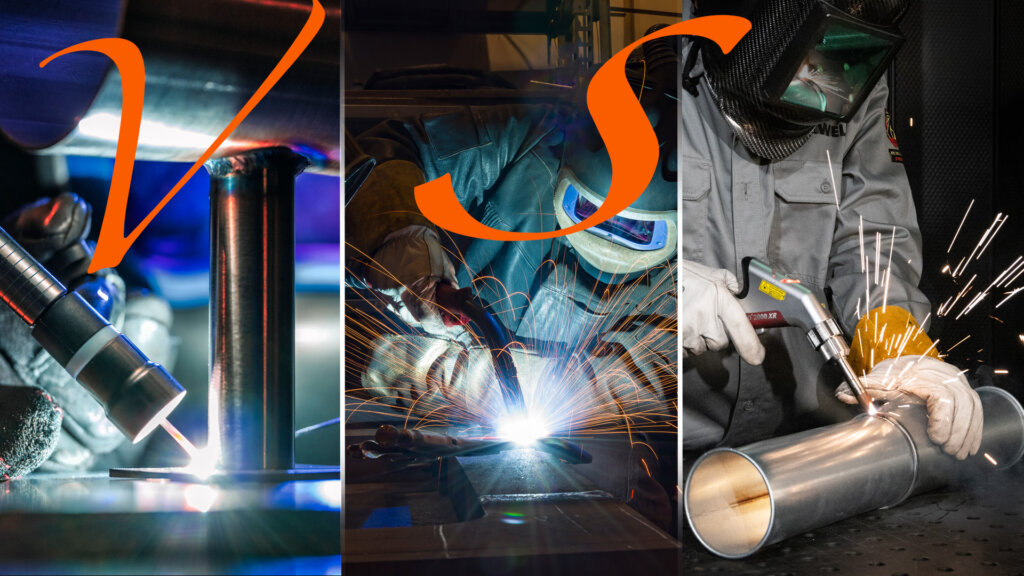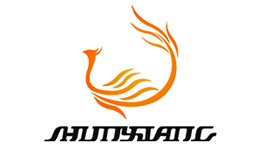Traditional Arc Welding vs. Handheld Laser Welding: Which is Right for Your Project?

Choosing the right welding method is crucial for productivity, safety, and profitability. As welding technology advances, handheld fiber-laser welding has rapidly gained popularity—but how does it truly compare to traditional methods like MIG, TIG, or Stick welding? Let’s dive into a detailed yet approachable comparison.
Understanding the Basics
Traditional Arc Welding (MIG/TIG/Stick) uses electricity to create an electric arc between an electrode and the workpiece. It’s versatile, cost-effective, and proven across heavy-duty applications.
Handheld Fiber-Laser Welding harnesses high-powered laser beams delivered through flexible optical fibers, providing precision, minimal distortion, and remarkable speed.
Key Differences at a Glance
| Aspect | Arc Welding (MIG/TIG/Stick) | Handheld Laser Welding |
|---|---|---|
| Material Thickness | 0.8mm – 25mm+ | Optimal: 0.3mm – 6mm |
| Welding Speed | Medium to High (MIG fastest) | 2–4x faster than MIG welding |
| Weld Quality | Moderate (some finishing required) | Superior (minimal finishing) |
| Heat Input | High (large heat-affected zone) | Low (minimal distortion) |
| Operational Costs | Lower upfront, higher consumables | Higher upfront, minimal consumables |
Real-Life Examples and Applications
-
Traditional Arc Welding shines in construction, heavy machinery, shipbuilding, and outdoor structural repairs.
-
Handheld Laser Welding excels in automotive parts, stainless steel kitchen equipment, electronics enclosures, and precision sheet metal fabrication.
Case Study: An automotive parts manufacturer switching to handheld laser welding saw a 65% reduction in rework and doubled their welding speed—directly boosting overall productivity
Safety & Protective Gear Comparison
Safety is paramount. Here’s how protection requirements differ:
| Protection Type | Arc Welding PPE | Laser Welding PPE |
| Eye Protection | Auto-darkening helmets (shade 10-14) | Laser-specific goggles (OD ≥6, 1060-1080 nm) |
| Clothing | Heavy FR clothing, leather apron | Lightweight FR clothing, occasional leather apron |
| Respiratory | High-filtration respirators (P100) | Standard respirators (P95+) with local extraction |
Total Cost of Ownership (TCO) – A Financial Perspective
Though handheld laser welding involves higher initial investment, its operational cost savings due to reduced consumables, minimal rework, and improved efficiency can deliver ROI in less than two years.
| Cost Element | Arc Welding (5 years) | Laser Welding (5 years) |
| Initial Equipment Cost | Low | High |
| Consumable & Maintenance | High | Low |
| Training & Certification | Moderate to High | Moderate |
| Productivity Gain | Moderate | High |
Sustainability & Environmental Impact
Laser welding reduces overall CO₂ emissions by significantly cutting down on energy usage per weld and lowering waste from consumables. This aligns perfectly with modern ESG (Environmental, Social, and Governance) practices.
Smart Welding: Future-Proofing Your Workshop
Industry 4.0 readiness is becoming essential. Handheld laser welding systems often come with advanced IoT capabilities—remote diagnostics, cloud-based parameter management, and real-time quality monitoring.
FAQs – Quick Answers to Popular Queries
-
Can laser welding replace all traditional welding?
-
Not entirely; thicker materials and outdoor repairs still favor traditional methods.
-
-
How quickly can welders adapt to handheld laser welding?
-
Typically, basic proficiency can be achieved within 2-3 days.
-
-
Does laser welding require special safety training?
-
Yes, it demands specialized laser safety training in compliance with ANSI Z136.1.
-
Making the Choice: Your Next Steps
Deciding between traditional arc welding and handheld laser welding involves careful consideration of your project’s needs, materials, budget, and long-term goals.
Need a hand making your decision?

